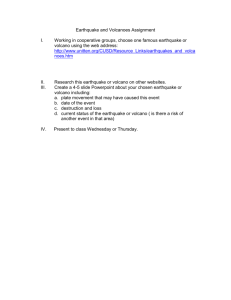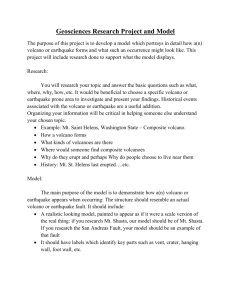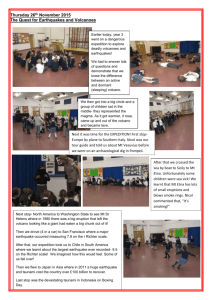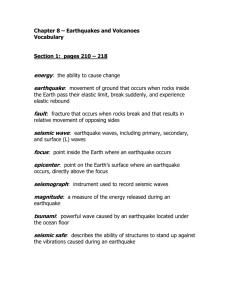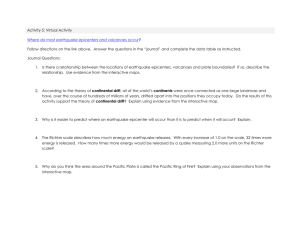Earthquake and Volcano Study Guide
advertisement
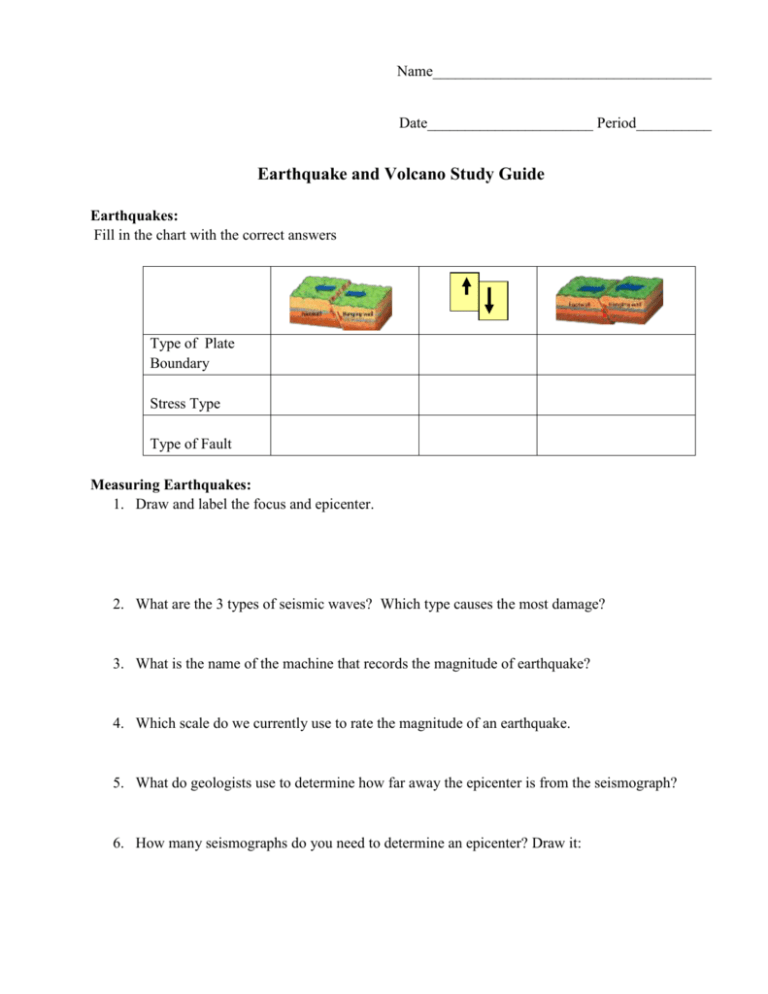
Name_____________________________________ Date______________________ Period__________ Earthquake and Volcano Study Guide Earthquakes: Fill in the chart with the correct answers Type of Plate Boundary Stress Type Type of Fault Measuring Earthquakes: 1. Draw and label the focus and epicenter. 2. What are the 3 types of seismic waves? Which type causes the most damage? 3. What is the name of the machine that records the magnitude of earthquake? 4. Which scale do we currently use to rate the magnitude of an earthquake. 5. What do geologists use to determine how far away the epicenter is from the seismograph? 6. How many seismographs do you need to determine an epicenter? Draw it: Earthquake Safety: 1. What are the three steps you should take during an Earthquake? 2. What is a base-isolated building? 3. What is liquefaction? 4. What is an aftershock? 5. Why is there a high likelihood of having an earthquake here? Volcanoes and Plate Tectonics: 1. What is formed when oceanic crust collides with oceanic crust? Give an example. 2. What is the difference between magma and lava? 3. What created the Hawaiian Islands? 4. What is the ring of fire and where is it located? 5. Iceland is formed on what type of plate boundary? Types of volcanoes: 1. When a volcano is “sleeping” and may erupt in the future, but hasn’t erupted for a while. 2. Type of volcano that has explosive eruptions, no side vents, and is cone shaped. 3. What do you call a volcano if it is erupting right now or has erupted recently? 4. Which type of volcano does NOT have side vents? 5. Shield volcanoes are gentle sloping, may have side vents, and have what type of eruptions? 6. Cinder Cone volcanoes are cone shaped and have what type of eruptions? 7. Composite volcanoes are cool because they are made out of alternating layers of what? Parts of a volcano: Fill in the blanks and label all the parts of the volcano 2 . 1 . 3 . 4 . 5 . 6 .

